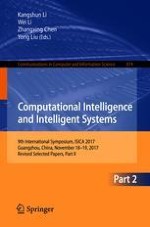This two-volume set (CCIS 873 and CCIS 874) constitutes the thoroughly refereed proceedings of the 9th International Symposium, ISICA 2017, held in Guangzhou, China, in November 2017. The 101 full papers presented in both volumes were carefully reviewed and selected from 181 submissions. This second volume is organized in topical sections on swarm intelligence: cooperative Search, swarm optimization; complex systems modeling: system dynamic, multimedia simulation; intelligent information systems: information retrieval, e-commerce platforms; artificial intelligence and robotics: query optimization, intelligent engineering; virtualization: motion-based tracking, image recognition.
